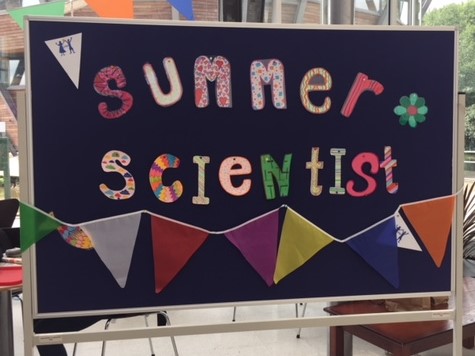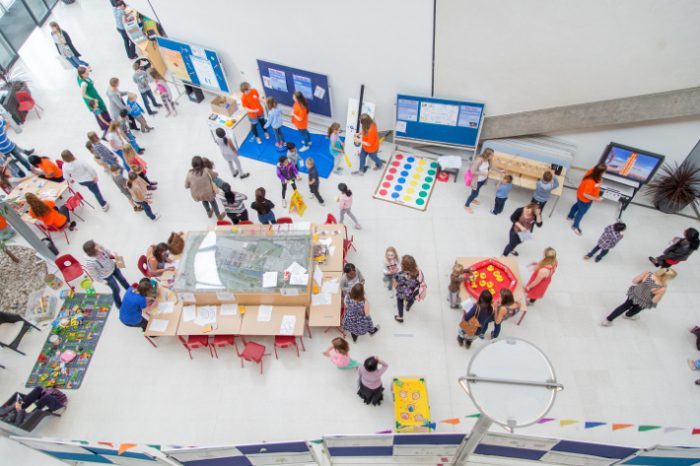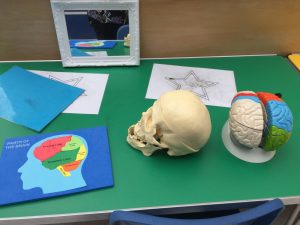Post by Harriet Cameron (2018 Cohort)

The GIFT Project is an international project funded by Horizon 2020, which explores new ways of engaging with cultural heritage through gifting . The scope of the project is huge, and draws together researchers, artists, designers and museum professionals from across Europe, including the University of Nottingham’s Mixed Reality Lab . GIFT has developed and deployed various experiences with museums in Denmark, Italy, Norway, Spain, Serbia, the UK and the USA since it began in 2017. It has several different ‘tracks’ within it, each of which explores different elements of gifting, interactivity and cultural experiences. For example The Gift Experience allows the user to choose objects or places within the museum; photograph them; personalise elements of it, for example with a written note or audio comment; and then gift it to someone to experience for themselves. Another example is The One Minute Experience, which uses templates and guidelines to enable visitors to write short texts about objects viewed in the museums, which they can then leave as gifts for other visitors. I was lucky enough to meet the wonderful Dr Jocelyn Spence, the lead Research Fellow at the University of Nottingham for the GIFT project and originator of VRtefacts (developed alongside the equally wonderful Dr Dimitrios Darzentas), early on in my PhD. Through her, I learned about the GIFT project and the amazing work they were doing.
My PhD project is working with the Nottingham Contemporary art gallery to explore relationships between audience, art and venue, and how those relationships can be better understood and developed into something more long term, personal and meaningful, through the use of novel technologies. Naturally, the GIFT project offered a fantastic insight into some of the ways work like mine is already being undertaken, and a chance to see how this work is received by the public users. When I was given the opportunity to help with a two day deployment of the VRtefacts experience as part of the GIFT project, I was delighted to get on board.
In late May 2019, at the Derby Museum and Art Gallery we showed VRtefacts to the public for the first time. The project, without spoiling anything for any reader who may yet get a chance to experience it themselves, used virtual reality (VR) to encourage visitors to donate personal stories to the Derby Museum. Enabled by a combination of tactile and digital technologies, and a beautiful VR environment created by Dr Dimitrios Darzentas, visitors were able to interact with artefacts in a thoroughly immersive and novel way. My role for the course of the deployment was to get the visitor settled into the VR environment, set the scene for their donation experience, and then to guide them through their storytelling. We heard from a broad array of people, who donated an even broader range of stories. From hypothesising what the artefact may have been used for, to memories of related objects and places, to tangential personal anecdotes and fictional hyperbole, we were gifted with some fantastic tales that added a resonant, human layer to the objects displayed. The value of this to the museum, the visitor, and the research project are multiple. For example, for the museum, it gave a new avenue to understanding their audiences, and the meanings they take from the exhibits shown. For the visitor, it allowed them a deeper way to engage with the exhibits, a space to reflect on their own experience or expertise, and a platform to share those reflections with others. Finally, in terms of research, it demonstrated a novel, exciting way of accessing audiences, as well as the importance of inter-disciplinary projects in contemporary research.
The future for museums and galleries comes, in part, in a technologically driven, interactive format, which enables visitors to experience not just the exhibits, but the museum experience as a whole in novel and exciting ways. VRtefacts is a timely and exhilarating glimpse at what future museum visiting may entail, and the feedback from the public who engaged with the project was overwhelmingly positive. By providing a way for visitors to interact with artefacts and exhibits in a tactile, personal way, it became apparent that each visitor had their own interpretations, reflections, and indeed stories for each piece, brought to the fore by the enoblement of the technologies involved, that they were excited to share with the museum as well as each other. Enabling the visitor to share their stories was not only well received by them, but also by the museum who were pleased to learn about the histories of each piece, or the personal relevance of the artefacts to the individual. VRtefacts represents one face of the future for museums and galleries, in which personalised interactivity forms an important part of the visitor experience.
On a more personal note, the project demonstrated just one way that technologies can be utilised to enable and encourage connections between visitors, cultural venues, and exhibits. Despite my involvement beginning late in the process, just a few weeks before the date of the intervention, I was delighted that my feedback on the human engagement element was integrated into the final experience, and it provided a valuable insight into how these kind of projects are developed and deployed in a museum setting. Running the experience also allowed me to revisit storytelling skills I had established during my time working at an escape room, and develop those skills in a new context. Most importantly I think, it gave me an insight into the practicalities of running an intervention; potential pitfalls and opportunities, the value of a strong team, and the importance of foresight (like bringing spares for your spares!). I’m looking forward to being involved in more projects like this in the future, learning more and offering more back, even at some point using these skills I have been developing to stage my own interactive experience within a cultural institution as part of my PhD.




